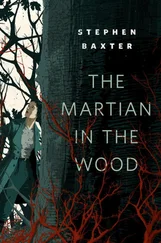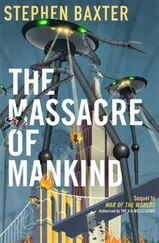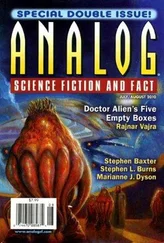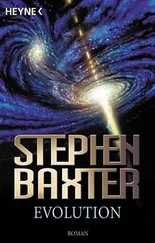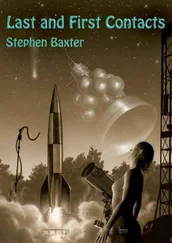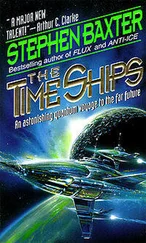Nature (vol. 465 pp34–5, 2010) published an interesting twenty-fifth anniversary retrospective on the discovery of the ozone hole by one of the researchers involved.
Climate Wars by Gwynne Dyer, One World, 2010. Grim projections of a future world battered by climate collapse.
“An Abrupt Climate Change Scenario and its Implications for United States National Security” by Peter Schwartz and Doug Randall, 2003. Report commissioned by the Pentagon, available online.
The Revenge of Gaia by James Lovelock, Allen Lane, 2006. An apocalyptic vision of the climate-change future from the author of the Gaia theory.
Living Through the End of Nature by Paul Wapner, MIT Press, 2010. A future in which we live sympathetically with nature.
The Vertical Farm by Dickson Despommier, Thomas Dunne Books, 2010. Moving farming into the cities and freeing up the countryside.
“Geoengineering and Climate: Science, Governance and Uncertainty,” The Royal Society, September 2009 ( http://royalsociety.org/Geoengineering-the-climate/). Prestigious survey of a controversial subject.
The Wildlife of Our Bodies by Rob Dunn, Harper, 2011. On how our bodies have been shaped by a connection with nature.
The World Without Us by Alan Weisman, Virgin, 2007. How the Earth would recover if humans vanished.
PART TWO: RDA
The NASA websites (start at www.nasa.gov) are a terrific resource on past, current and future U.S. space projects. www.history.nasa.gov, NASA’s official history website, is an excellent resource on Project Apollo. You can find Lunar Reconnaissance Orbiter images of the Apollo landing sites: www.nasa.gov/mission_pages/LRO/multimedia/lroimages/apollosites.html. For NASA’s Near Earth Object programme, see http://neo.jpl.nasa.gov/index.html.
A Man on the Moon by Andrew Chaikin, Michael Joseph, 1994. Still probably the best popular account of the Apollo missions.
Voyage by Stephen Baxter, HarperCollins, 1996. My fictional account of how we could have gone on after Apollo to reach Mars in the 1980s.
Information on the Skylon project is available at www.reactionengines.co.uk.
Mining the Sky by John S. Lewis, Addison Wesley, 1996. Off-Earth resources and how to prospect them.
The High Frontier: Human Colonies in Space by Gerard K. O’Neill, William Morrow, 1977. Dated but still visionary prospectus for humanity’s expansion beyond the Earth.
The Millennial Project by Marshall T. Savage, Little, Brown, 1992. A mind-blowing prospectus for the human colonisation of space, starting with baby steps in Earth’s oceans and finishing up by turning the Galaxy green.
Titan Unveiled: Saturn ’ s Mysterious Moon Unveiled by Ralph Lorenz and Jacqueline Mitton, Princeton University Press, 2008. A post- Huygens survey of the solar system’s own Pandora.
Life As We Do Not Know It by Peter Ward, Viking, 2005. Recent review of possibilities of exotic forms of life, on Titan, in the solar system and beyond.
PART THREE: VENTURE STAR
Project Icarus, the starship study by the British Interplanetary Society and the Tau Zero Foundation, is at www.icarusinterstellar.org.
The Starflight Handbook by Eugene Mallove and Gregory Matloff, Wiley, 1989. Still an essential reference to the theory and practice of star travel. Warning: contains equations.
Centauri Dreams by Paul Gilster, Springer, 2004. A less technical overview of the prospects for interstellar exploration.
How to Build a Time Machine by Paul Davies, Allen Lane, 2001. A very accessible guide to Einstein’s relativity theory.
Antimatter by Frank Close, Oxford University Press, 2010. A recent study of the mysteries of mirror matter.
The Physics of Star Trek by Lawrence Krauss, Basic Books, 1995. Contains a discussion on antimatter as used in the TV show.
The Journal of the British Interplanetary Society , vol. 61 no. 9, September 2008, contains a write-up of a recent seminar on progress in warp-drive theory.
The Roth Lab, researching into suspended animation, is at http://labs.fhcrc.org/roth.
PART FOUR: PANDORA
Extrasolar Planets Encyclopaedia , http://exoplanet.eu, a fascinating resource run out of the Paris observatory.
The Crowded Universe by Alan Boss, Basic Books, 2009. A good recent review on exoplanets.
What If the Earth Had Two Moons? by Neil F. Comins, St. Martin’s Press, 2010. Contains useful speculation on conditions on a Pandora-like moon of a giant planet.
The Anthropological Cosmological Principle by John Barrow and Frank Tipler, Oxford University Press, 1986. Contains an interesting discussion of the effects of gravity (and other basic physical forces) on the size of living things.
“The Limits to Tree Height” by George Koch et al., Nature , vol. 428, pp851–4, 2004. A recent study of the subject.
The Encyclopaedia of Science Fiction (Orbit, 1993) to which David Langford contributes, is currently undergoing a revision. A public website where progress can be viewed is at http://sfe3.org. Check out the “elements” entry for a discussion of unobtanium.
Borderlands of Science by Charles Sheffield, Baen, 1999. An excellent review of current science developments, meant as a crib for science-fiction writers. Chapter Two contains a discussion of superconductivity.
“Superconductivity Gets an Iron Boost” by Igor Mazin, Nature , vol. 464, pp183–6, 2010 ( www.nature.com/reprints). A recent review of developments in the field.
Rising Force by James D. Livingston, Harvard University Press, 2011. A recent study of maglev technologies.
PART FIVE: HELL’S GATE
The Case for Mars by Robert Zubrin, Free Press, 1996. Closely argued and detailed proposal for a feasible and relatively inexpensive way for humans to reach Mars.
Project Boreas: A Station for the Martian Geographic North Pole , ed. Charles S. Cockell, British Interplanetary Society, 2006. Our Mars polar base study. The Mars Society is at www.marssociety.org. A good study on heavy-duty drilling on Mars is B. Frankie et al., “Drilling Operations to Support Human Mars Missions,” in Proceedings of the Founding Convention of the Mars Society , ed. R. Zubrin et al., San Diego, 1998 (MAR 98-061).
“The Intellectual Property Implications of Low-Cost 3D Printing” by S. Bradshaw, A. Bowyer and P. Haufe, (2010) 7:1 SCRIPTed 5, http://www.law.ed.ac.uk/ahrc/script-ed/vol7-1/bradshaw.asp. Extensive discussion of the exploitation of this new manufacturing technique.
Medicine by Anne Rooney, Heinemann, 2005. A lively and accessible review of recent advances in medicine.
The Stem Cell Hope by Alice Park, Hudson Street Press, 2011. A recent review of an exciting area of medicine.
Handbook for Human Computer Interaction by Andrew Sears and Julie Jacko (eds), CRC, 2007. A handbook on this interesting field.
Guns For Hire: The Inside Story of Freelance Soldiering by Tony Geraghty, Portrait, 2007. The modern private military contractors.
Jane ’ s All the World ’ s Aircraft by Susan Buishell et al., Jane’s Information Group, 2010. Essential resource on military aircraft and others.
The mecha fan community is at www.armoredcoreonline.com.
PART SIX: LIVING WORLD
The Deep by Claire Nouvian, University of Chicago Press, 2007. A beautiful photographic essay on Earth’s deep oceans—including many examples of bioluminescence.
Читать дальше
